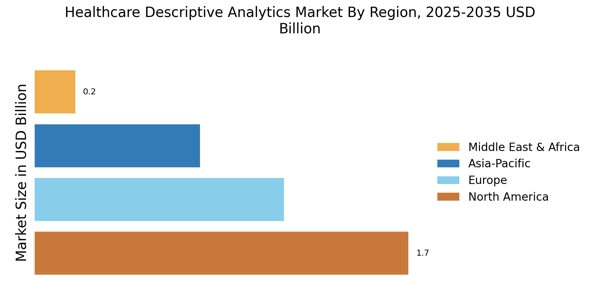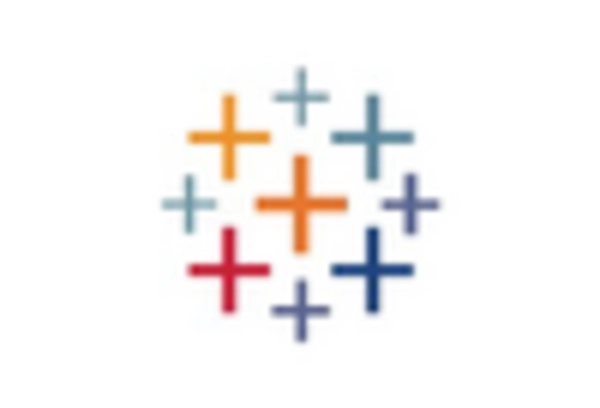Rising Demand for Data-Driven Decision Making
The Healthcare Descriptive Analytics Market experiences a notable surge in demand for data-driven decision making. Healthcare organizations increasingly recognize the value of leveraging data analytics to enhance operational efficiency and improve patient outcomes. According to recent estimates, the market for healthcare analytics is projected to reach approximately 50 billion USD by 2026. This growth is driven by the need for actionable insights derived from vast amounts of healthcare data, enabling providers to make informed decisions. As healthcare systems evolve, the integration of descriptive analytics becomes essential for identifying trends, optimizing resource allocation, and enhancing patient care. Consequently, organizations are investing in advanced analytics solutions to harness the power of data, thereby propelling the growth of the Healthcare Descriptive Analytics Market.
Advancements in Technology and Data Integration
Technological advancements are reshaping the Healthcare Descriptive Analytics Market. The integration of artificial intelligence, machine learning, and big data analytics is revolutionizing how healthcare organizations analyze and interpret data. These technologies facilitate the processing of vast datasets, enabling providers to derive meaningful insights from complex information. The market for healthcare analytics is anticipated to grow at a compound annual growth rate of over 25% through the next few years, driven by these technological innovations. As organizations adopt advanced analytics tools, they can enhance predictive capabilities, improve patient engagement, and streamline operations. Thus, the Healthcare Descriptive Analytics Market is likely to expand as technology continues to evolve and organizations seek to leverage data for strategic decision-making.
Growing Emphasis on Population Health Management
The focus on population health management significantly influences the Healthcare Descriptive Analytics Market. As healthcare systems shift towards value-based care, there is an increasing need to analyze population health data to identify health trends and disparities. Descriptive analytics enables healthcare providers to segment populations, assess health outcomes, and implement targeted interventions. This trend is underscored by the fact that healthcare organizations are expected to invest over 30 billion USD in population health management solutions by 2025. By leveraging descriptive analytics, providers can enhance care coordination, reduce costs, and improve health outcomes for diverse populations. Consequently, the Healthcare Descriptive Analytics Market is poised for growth as organizations seek to harness data for effective population health strategies.
Increased Focus on Cost Reduction and Efficiency
Cost reduction and operational efficiency are paramount concerns within the Healthcare Descriptive Analytics Market. Healthcare organizations are under constant pressure to minimize expenses while maintaining high-quality care. Descriptive analytics provides valuable insights into operational processes, enabling organizations to identify inefficiencies and optimize resource allocation. By analyzing data related to patient flow, staffing, and resource utilization, healthcare providers can implement strategies that enhance efficiency and reduce costs. The potential for significant savings is evident, as organizations that effectively utilize analytics can achieve cost reductions of up to 20%. Consequently, the Healthcare Descriptive Analytics Market is expected to grow as organizations prioritize analytics solutions that drive efficiency and cost-effectiveness.
Regulatory Compliance and Reporting Requirements
Regulatory compliance plays a pivotal role in shaping the Healthcare Descriptive Analytics Market. Healthcare organizations are mandated to adhere to various regulations, such as HIPAA and HITECH, which necessitate the implementation of robust data analytics solutions. These regulations require accurate reporting and analysis of patient data, driving the demand for descriptive analytics tools that can ensure compliance while providing insights into operational performance. The increasing complexity of regulatory frameworks compels healthcare providers to adopt advanced analytics solutions to streamline reporting processes and mitigate risks associated with non-compliance. As a result, the Healthcare Descriptive Analytics Market is likely to witness sustained growth as organizations prioritize compliance and invest in analytics capabilities to meet regulatory demands.


















Leave a Comment